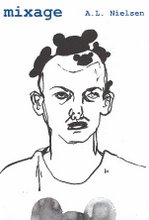
This is the "door of no return" at El Mina.
Through this door untold numbers of Africans were forced onto boats and into slavery in the Americas.
When the fortress at El Mina was first constructed by the Portuguese in the 15th century, this door was larger. It was narrowed later to the point where only one person at a time could be passed through, and that person's body would have to be contorted to fit.
This means that the men who carried out their infernal enterprise here must have held discussions about altering this door for the "better" constraint and management of their captives. Standing here I felt as if I were witnessing the planning of a holocaust.
 Shown in this photo is a model of El Mina castle on display at the National Museum of Ghana. The remainder of these pictures were taken on location.
Shown in this photo is a model of El Mina castle on display at the National Museum of Ghana. The remainder of these pictures were taken on location.

 By far the most emotionally powerful day of the Pan African Literary Forum was the day we visited the slave fortresses at El Mina and Cape Coast.
By far the most emotionally powerful day of the Pan African Literary Forum was the day we visited the slave fortresses at El Mina and Cape Coast.El Mina is the oldest surviving large structure built by the Europeans south of the Sahara, and it was the point of departure for the slave ships for a period of centuries, as the Portuguese were followed by the Dutch and by the English. If you have ever seen Haile Gerima's film SANKOFA, you have a good idea of the feelings generated in our group as we were shown the dungeons, as we looked through the "door of no return," as we climbed the stairs to the spacious and airy quarters of the castles' succession of governors.

The slave traders were remarkable literalists.



































No comments:
Post a Comment